As we move towards the future of work, remember these two words: hybrid work. A hybrid work model includes a mixture of remote, semi-remote, and in-office employees. You might be familiar with remote or in-office work environments, but what about the ones that offer a mixture of both? This is where hybrid work comes into the picture. Some even say hybrid work is the new remote work.
👀 Are businesses actually fully remote right now? How many are already back in the office? Find out in our State of Hybrid Work report.
Why should you care about hybrid work? A major reason is because businesses are shifting more to a hybrid work model. In fact, a Gartner survey revealed 82% of company leaders plan to allow employees to work remotely some of the time. Business leaders and owners are now reassessing their operations in order to effectively manage a more complex, hybrid workforce.
“The COVID-19 pandemic brought about a huge experiment in widespread remote working. As business leaders plan and execute reopening of their workplaces, they’re evaluating more permanent remote working arrangements as a way to meet employee expectations and to build more resilient business operations.” — Elisabeth Joyce, Vice President of Advisory at Gartner
There’s no denying businesses are entering a new era of hybrid work. This begs the question: How are businesses (especially small businesses) currently navigating hybrid work? To find out, we surveyed 1,000 individuals at US companies with 1–100 employees and compiled the key findings in our State of Hybrid Work report. Below, we share the top five takeaways from our research and offer tips on how you can apply these insights to your business strategy.
1. Hybrid work is the future of work
Most businesses were either completely or mostly in the office pre-COVID-19, but now 3 in 5 are at least partially remote.
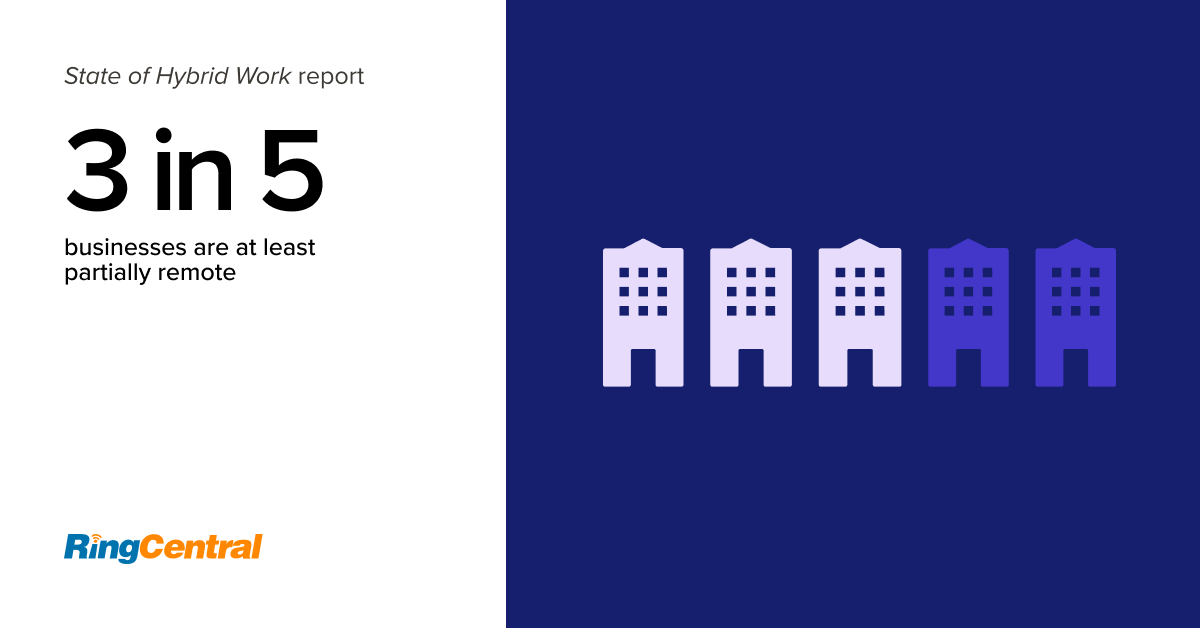
With the majority of businesses now partially remote, it’s clear that hybrid work isn’t just a buzzword. Start assessing your current operations to support both in-office and remote work setups. Give yourself the ability to manage your business from anywhere by selecting the right tools. Not sure where to get started? Check out our list of the best free business software for small and medium-size businesses.
2. A growing love for remote work
Attitudes towards remote work have improved, with 66% of businesses viewing remote work positively.
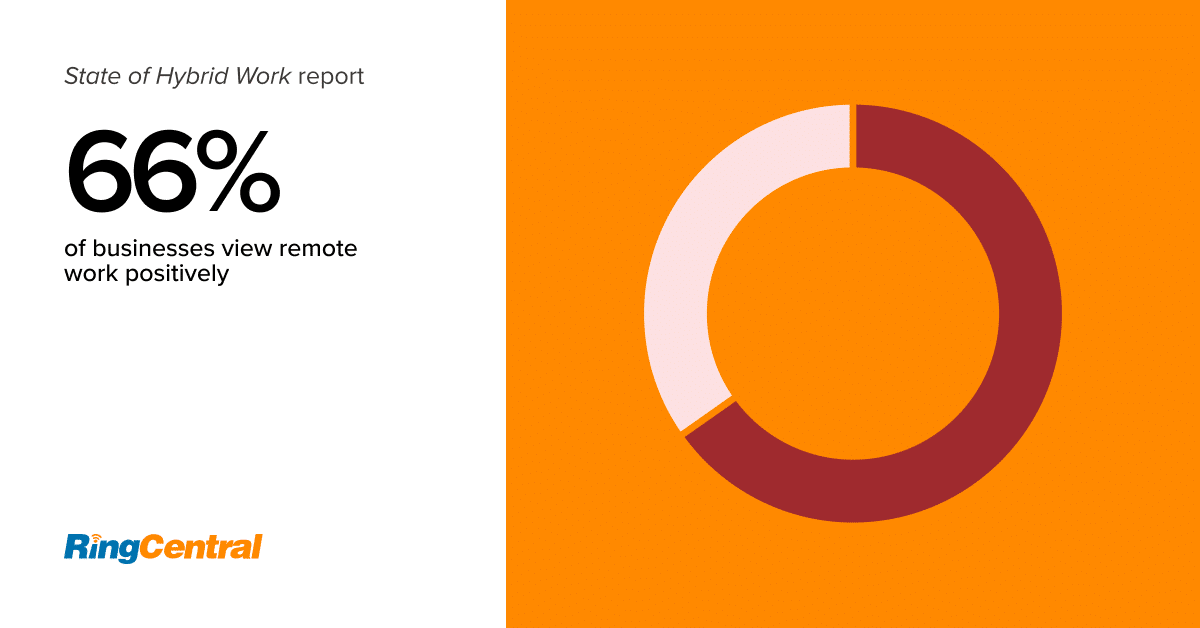
Business owners and employees alike are seeing the benefits that come with remote work, including more cost savings and flexibility. In our study, more than a quarter of employees have enjoyed an increase in time spent with family or friends. The option to work remotely has become an expectation for many people, which is not surprising given remote work offers more flexibility, a better work-life balance, less commute stress, and increased performance.
3. The need to connect
More than 1/4 of employees say they have less frequent work interactions.
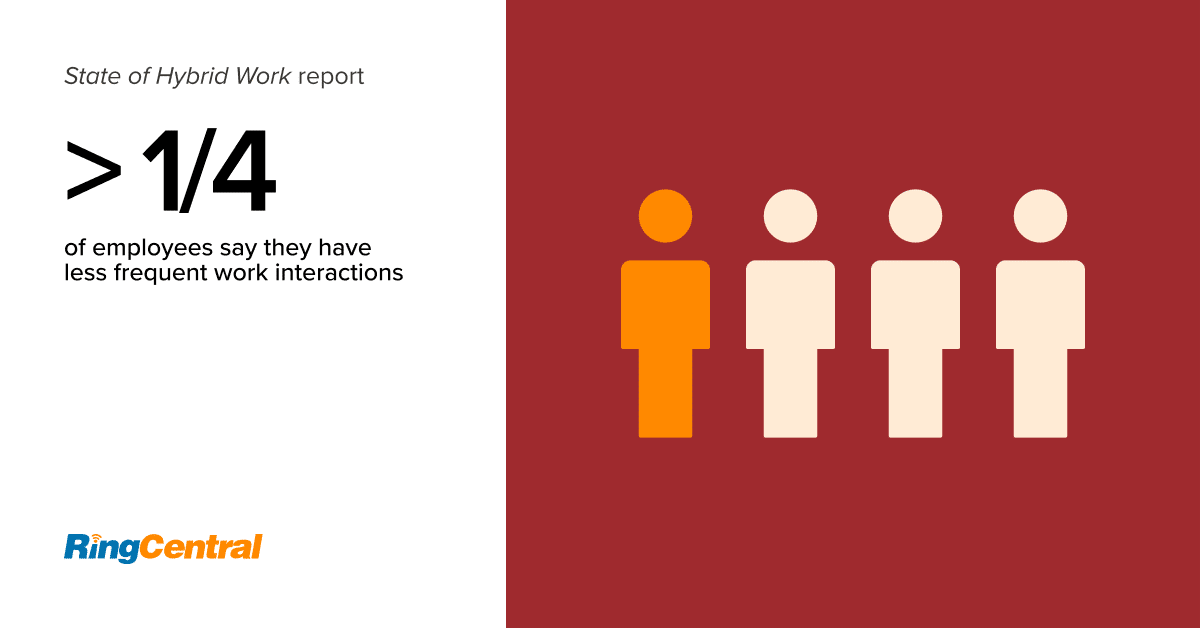
Connection is a core human need, but there are now fewer social interactions between coworkers due to COVID-19. Employees require a sense of connection and belonging, especially in a remote or hybrid work environment. Even half of employees agree that being in the same location as coworkers is important. Given employees ranked email as the #1 choice for communicating socially with coworkers, followed by phone calls and text messaging, make it your priority to pick a reliable email and phone system that is easy to use, and even easier to set up.
4. Productivity needs more attention
1 in 4 businesses are experiencing a decrease in productivity over the last few months.
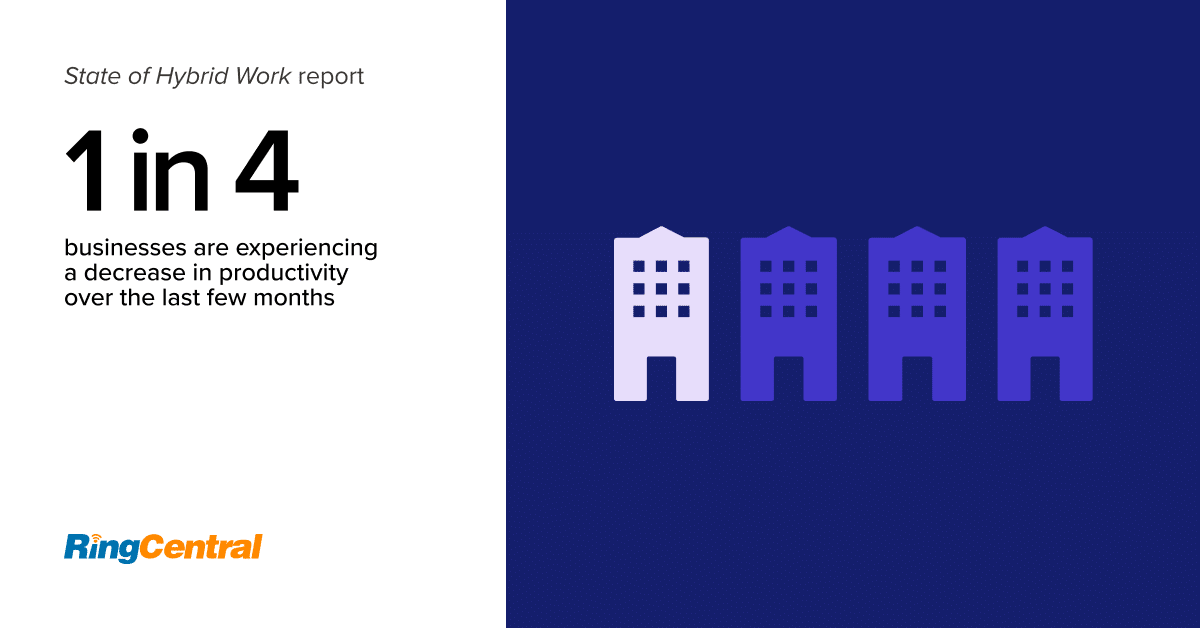
Productivity is a top focus for all business owners. If employee productivity drops, your business takes a hit. Start boosting productivity and maximizing collaboration between employees, vendors, and stakeholders by letting your employees collaborate seamlessly across team messages, video meetings, and phone calls. According to our report, employees are using phone calls, texts, team messaging, and video conferencing more frequently. And don’t stop there—take productivity to the next level by trying out these four ways to increase productivity and give your team a boost.
5. Video conferencing grows in popularity
When it comes to communication tools, video conferencing has seen the greatest increase in usage, with 2 in 5 businesses using it more frequently.
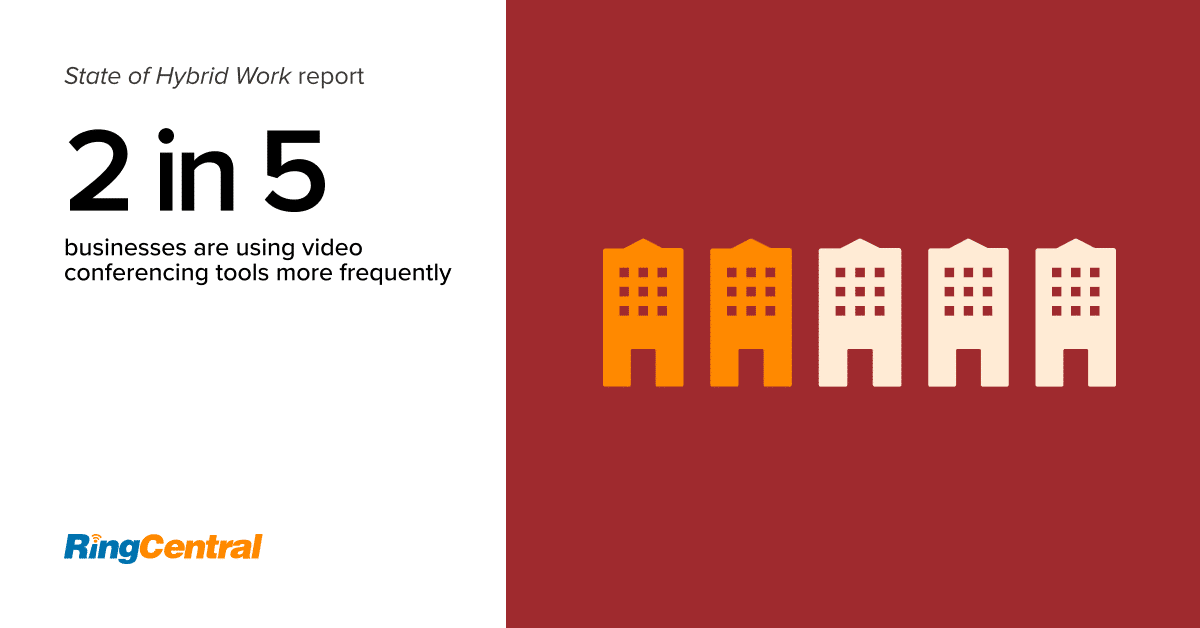
Did you know almost 1/3 of businesses have a more positive view of video conferencing now than they did six months ago? If you’re not already using video conferencing, it’s time to reconsider. Video conferencing supports tomorrow’s hybrid workplace, where meetings will require more than just a physical room. Traditional in-person meetings won’t cut it anymore because they’re unable to accomodate remote employees. Connect both your in-office and remote employees with video conferencing and built-in team messaging. Take it one step further and upgrade to an advanced online meeting tool, such as RingCentral Rooms™, to better support employees so they can meet together anytime, anywhere with new conferencing features.
Moving forward
Whether you see hybrid work as a challenge, an opportunity, or both, we hope you walk away feeling confident about how to approach this new way of working. As you build and refine your business strategy to fit a hybrid work model, keep these key insights and tips in your back pocket.
🕹️ Get a hands-on look at how RingCentral works by booking a product tour:
💰 You can also use this calculator to see roughly how much your business could save by using RingCentral to support your team’s communication with each other, clients, freelancers, and more.
Originally published Feb 25, 2021, updated Dec 30, 2022






